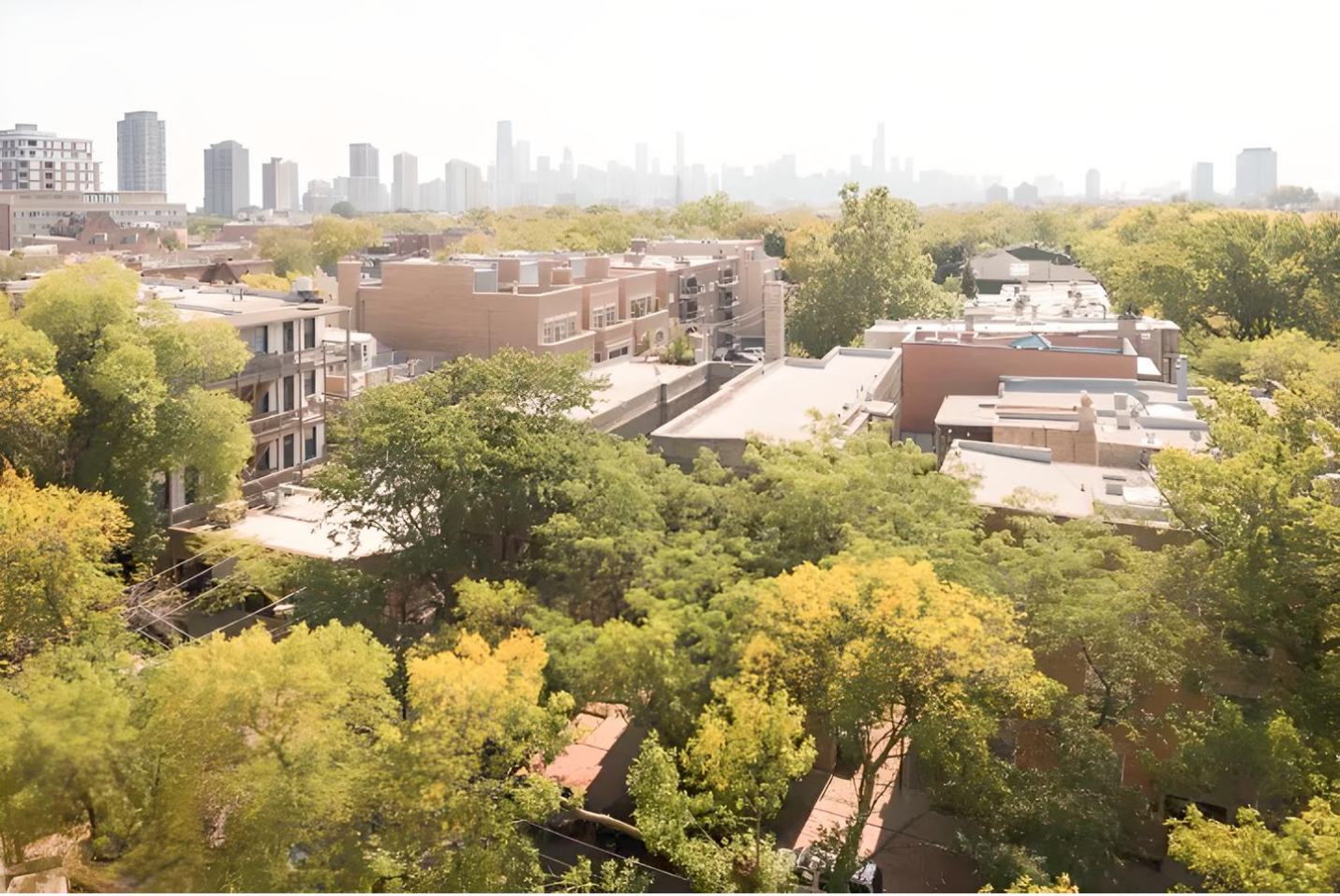A new modeling framework highlights urban greening as a sustainable solution to achieve environmental co-benefits in mitigating heat and carbon emissions.
The Science
Plants growing in urban environments like cities experience warmer temperatures and more carbon dioxide due to large concentrations of people and buildings. These plants can help cool cities and absorb carbon in the air. Their environmental benefits can vary depending on how they are cared for. A team of researchers used a new simulation tool to quantify urban plants’ impact on city environments and watering’s effect on plants. A case study for the Chicago area found that during summer heatwaves, plant’s overall carbon absorption decreased; however, proper watering can help plants capture more carbon dioxide from the air.

The Impact
The study found proper urban irrigation could help plants in the Chicago area absorb as much as half of cars’ emissions during the summer. The study’s simulation tool can make detailed plans for improved environmental benefits in summer cooling, carbon neutrality, and water conservation. The tool could also help cities implement strategies and nature-based solutions to make cities more resilient against a changing climate and meet carbon neutrality goals.
Summary
Urban plants modify the built environment and absorb carbon dioxide. However, their behaviors have not been fully studied in the urban setting, nor have urban environments’ impacts on plant growth.
Researchers used a numerical model to co-simulate the urban environment and behaviors of urban green land to investigate their interactions in the Chicago Metropolitan Area. The results show heatwaves will decrease the overall carbon absorption, while proper irrigation can help capture more carbon dioxide from the air. Compared to the traffic emissions in the Chicago region, carbon absorption variations are over 35%, which is considered significant.
The study underscores the important role of urban plants in assessing the carbon footprint at a city level. Given the widespread application of urban irrigation, its influence on carbon exchange should be carefully considered to ensure overall positive environmental impacts. Using the Environmental Benefit Score introduced in this study, researchers can quantify the dynamics in the heat-water-carbon nexus under human-caused influences with the goal of improving the understanding of urban vegetation carbon balance. The framework can also be applied to broader regions where land use data is available.
PRINCIPAL INVESTIGATOR
Ashish Sharma
Discovery Partners Institute at the University of Illinois System and Argonne National Laboratory
[email protected]
PROGRAM MANAGER
Sally McFarlane
U.S. Department of Energy,
Biological and Environmental Research (SC-33)
Urban Integrated Field Laboratories
[email protected]
Funding
This work is supported by the Biological and Environmental Research program within the U.S. Department of Energy’s Office of Science under contract DE-AC02-06CH11357. This work is also supported by the Walder Foundation and National Science Foundation awards 139316 and 2230772. High-performance computing support was received from the Cheyenne supercomputer (DOI:10.5065/D6RX99HX) provided by the National Center for Atmospheric Research’s Computational and Information Systems Laboratory.
References
Li, P., et al. “Assessing Impacts of Environmental Perturbations on Urban Biogenic Carbon Exchange in the Chicago Region.” Journal of Advances in Modeling Earth Systems 15 (10), e2023MS003867 (2023). https://doi.org/10.1029/2023MS003867.


